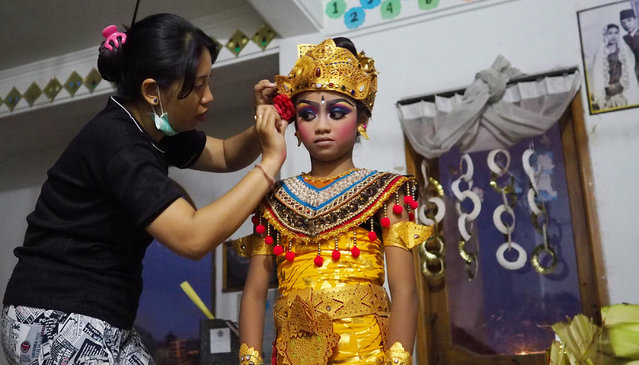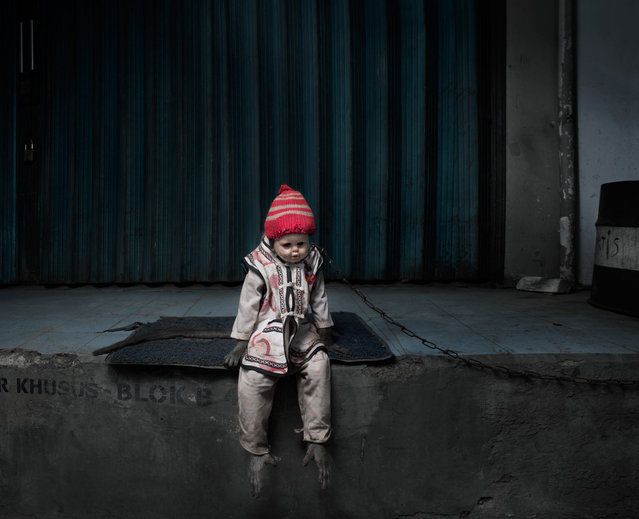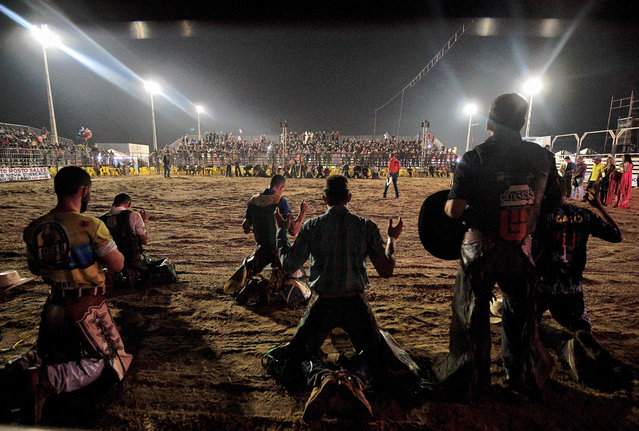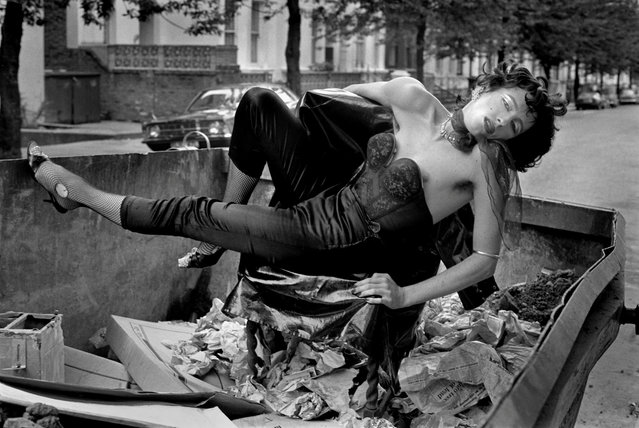
11-year-old Balinese dancer girl Intan puts on makeup before she performs Mergapati Dance at a village event in Banjar Wangaye Kelod, Denpasar, Bali, Indonesia on November 19, 2017. To preserve traditional dances and culture, Balinese train their children to learn various traditional dances from childhood. (Photo by Mahendra Moonstar/Anadolu Agency/Getty Images)
21 Nov 2017 09:30:00,post received
0 comments







